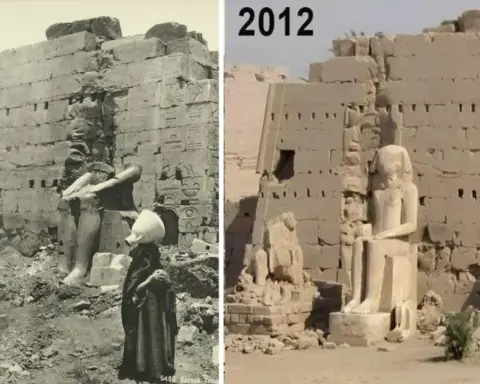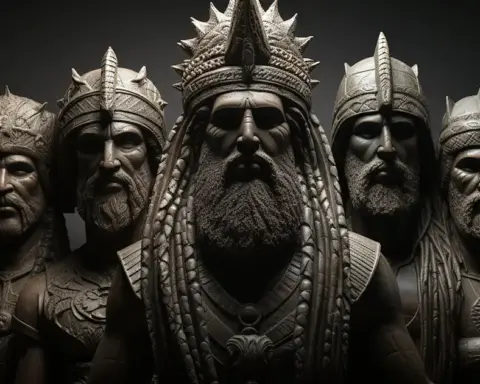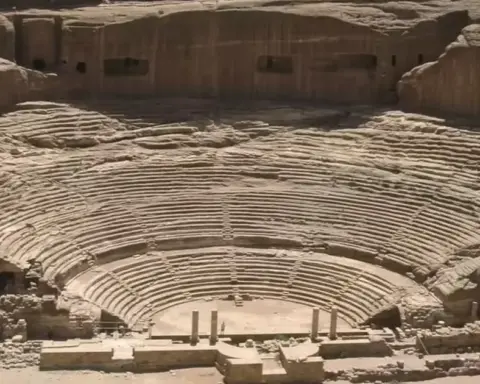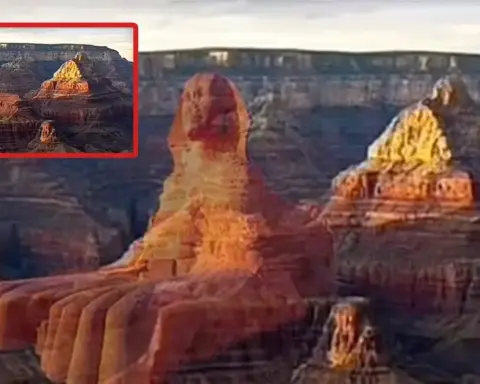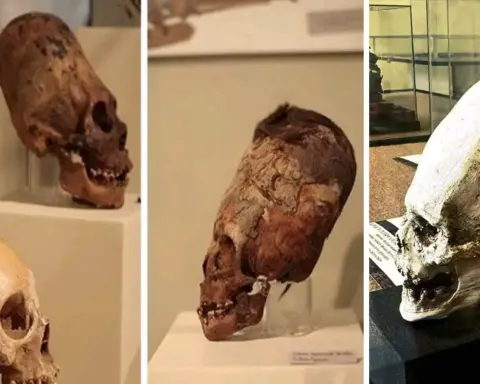The ancient lands of Egypt shrouded in the mystique of time and history, harbor a myriad of enigmas waiting to be unraveled. Among these, the 4,800-year-old staircase leading to Pharaoh Djoser’s Southern Tomb at Saqqara emerges as a profound testament to the architectural genius and spiritual depth of ancient Egyptian civilization. This stairway, not merely a structure of stone but a bridge between the earthly and the divine, invites us on a journey back through the ages to the dawn of monumental architecture.
The Enigmatic Step Pyramid: A Gateway to Eternity
Nestled within the sprawling necropolis of Saqqara, the Step Pyramid stands as the earliest colossal stone structure in Egypt, heralding the dawn of pyramid construction. This architectural marvel, conceived by the visionary Imhotep for Pharaoh Djoser, marks a pivotal evolution in the funerary practices of the ancient Egyptians. It is a symbol of the pharaoh’s unparalleled status and his eternal journey into the afterlife.
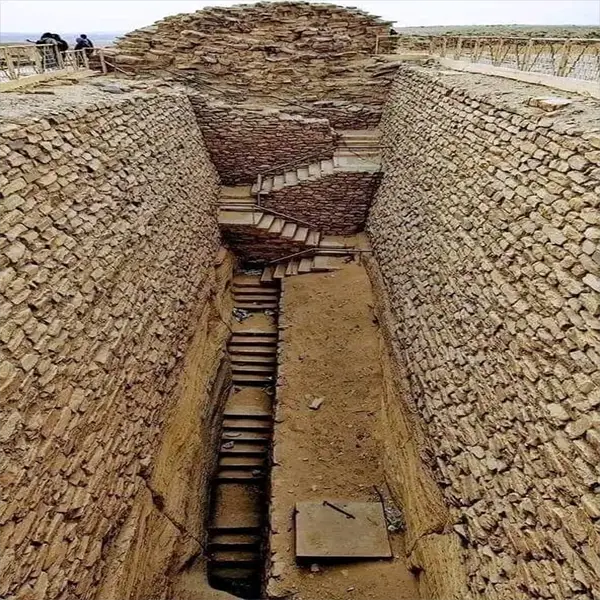
Ascending the Sacred Stairs
The journey to Djoser’s Southern Tomb is embarked upon through a series of grandiose stairs, each step a testament to the pharaoh’s ascent into the celestial realm. Carved meticulously from limestone, these stairs are not just a path but a portal, guiding the soul of Djoser from the terrestrial to the divine. The craftsmanship and precision with which these stairs were constructed speak volumes of the ancient Egyptians’ mastery over their craft and their profound understanding of spiritual symbolism.
The Walls That Whisper Ancient Tales
As one ascends the sacred staircase, the walls come alive with hieroglyphs and intricate reliefs, narrating tales from Djoser’s reign, his divine offerings, and the religious rituals that ensured his safe passage into the afterlife. These images, frozen in time, serve as a bridge connecting the present with the distant past, offering glimpses into the religious and cultural fabric that wove the tapestry of ancient Egyptian society.
The Burial Chamber: A Conduit to the Afterlife
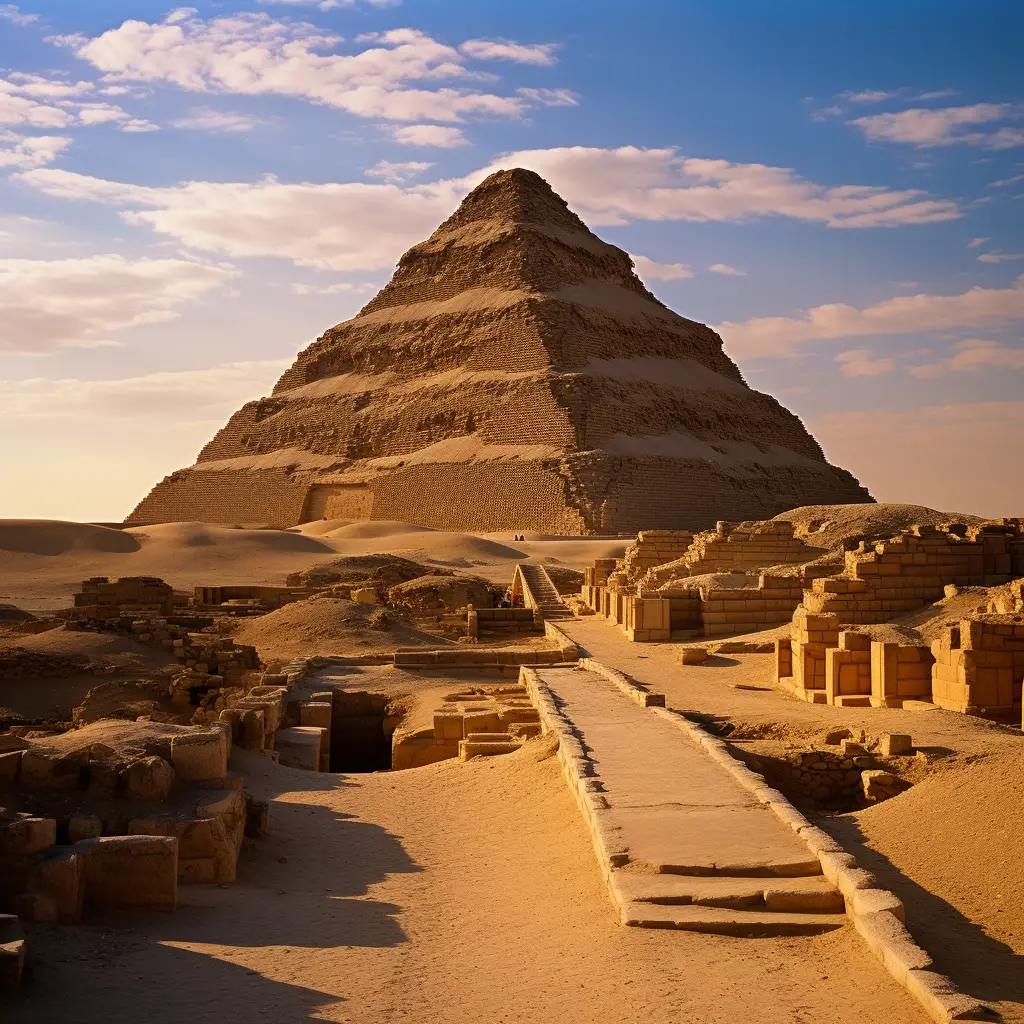
The culmination of the ascent through the staircase is the Southern Tomb itself, a space imbued with deep religious significance. Here, ancient Egyptian funerary practices unfold in their most primal form, with the burial chamber and its adjoining corridors echoing the monumental leap in architectural and spiritual thought. Though stark in its simplicity, the tomb harbors the seeds of architectural innovation that would blossom into the grand pyramids of Giza.
A Journey Through Time
Venturing into the Southern Tomb of Pharaoh Djoser is akin to traversing the boundaries of time. Each corridor, chamber, and stairway within the Step Pyramid complex is a chapter in the story of ancient Egyptian belief in life beyond death. The spells and prayers adorning the walls of the burial chamber whisper of a realm beyond the grasp of the living, a realm where the pharaoh embarks on his divine journey, accompanied by the gods.
The Legacy of the Stairs to Eternity
The 4,800-year-old stairs to Pharaoh Djoser’s Southern Tomb stand as a beacon of ancient Egyptian ingenuity and their unwavering belief in the afterlife. This staircase, eroded by the passage of time yet steadfast in its purpose, serves as a tangible connection to a civilization whose influence on the world remains unmatched. It beckons the modern traveler to tread softly, with reverence for the ancient souls that once walked this path, and to ponder the mysteries of life, death, and the legacy we leave behind.
In exploring the depths of the Southern Tomb and ascending the ancient stairs at Saqqara, we are reminded of the enduring quest for understanding and the universal yearning for immortality. These ancient steps, a bridge between worlds, continue to inspire awe and wonder, inviting us to reflect on our place in the continuum of history and the profound legacy of ancient Egypt.
VIDEO:


